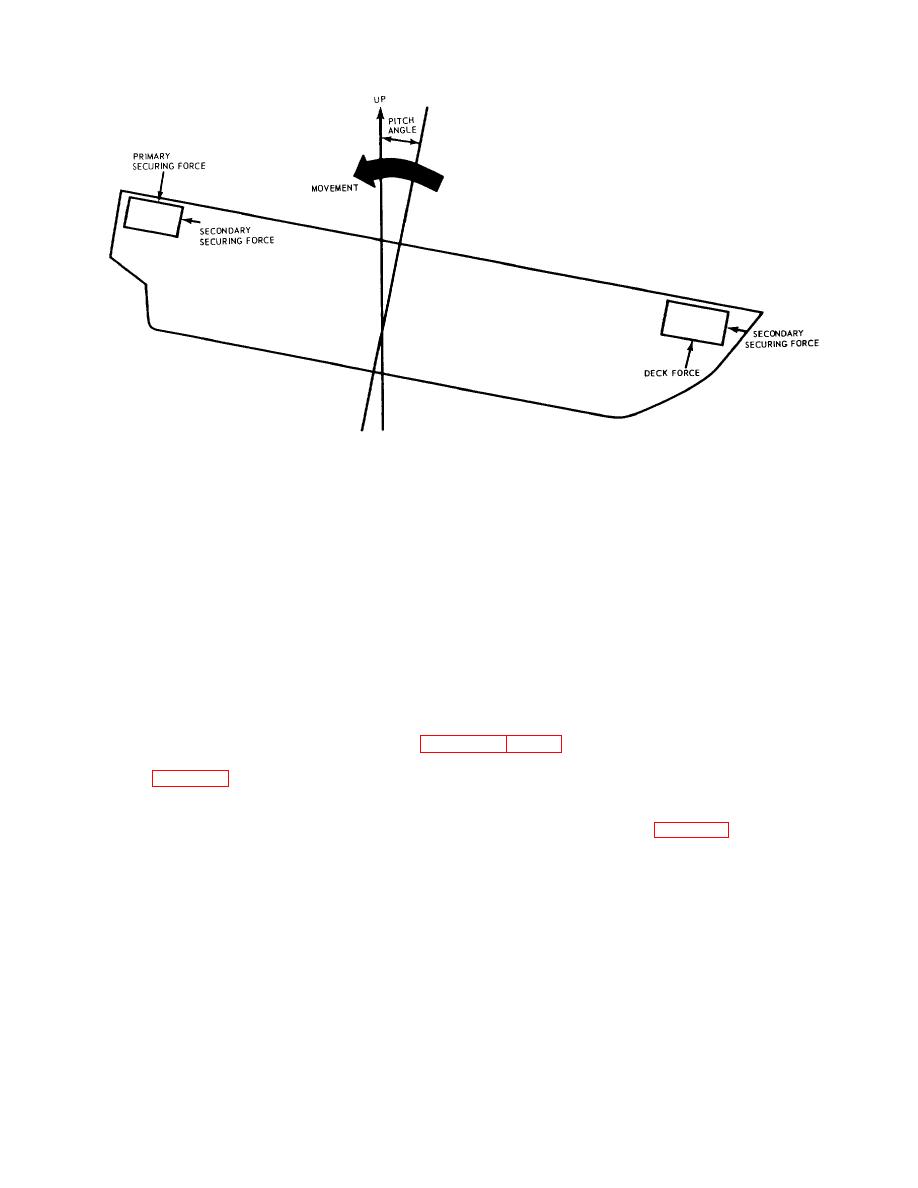
TM 55-607/NAVSEA OP 3221 Rev 2
Figure 6-5. Dynamic forces due to pitch motion.
d. The forces on cargo generated by the ship's rolling motion are considerably greater than those generated by the
pitching motion. Although blocking and bracing must be provided to secure the cargo in all directions, the major
consideration in the orientation and dunnaging of cargo is to ensure adequate resistance to roll forces. Other forces,
such as those caused by slamming the hull in rough seas or cyclic vibrations of propulsion gear, must be considered for
possible long-term detrimental effects on the cargo dunnaging structures.
6-3. Fundamental Securing
The general terms "securing" and "dunnaging" are used interchangeably to describe the procedures by which military
explosives are effectively blocked, braced, and tommed aboard merchant-type ships to resist forces generated by vessel
response to sea conditions. Securing includes not only the various wooden structures used in cargo securement, but also
any straps or webs that are used to restrain cargo stowed in the holds and on the weather deck of a ship. To describe
more specifically the process to obtain a secure stow, the terms "blocking" and "bracing" are commonly used. These
terms are closely related, although each function is distinctly different.
a. Blocking. Blocking is the act of installing solid pieces of wood, or blocks, to a deck, bulkhead, or overhead in
such a manner that these pieces bear directly against the cargo to prevent movement of the cargo horizontally. Blocking
must be braced, shored, or tommed to be effective. Figures 6-6 and 6-7 illustrate the basic blocking techniques from
which more complex securing structures are developed. Additional bracing would be required to secure the item
adequately. In figure 6-6, 2 by 4-inch pieces of lumber are doubled, instead of the use of a single 4 by 4-inch piece to
facilitate nailing and securement to the deck. The 2 by 6-inch contacting piece of blocking extends the full width of the
unit load. Since blocking may be nailed directly to the wooden deck, the load may be secured in any location in the hold
without the need for extending the blocking to permanent ship's structures for bracing. In figure 6-7, however, the mental
deck precludes direct nailing; consequently, 4 by 4-inch lumber must be extended to the bulkhead to provide the
necessary bracing.
6-5


